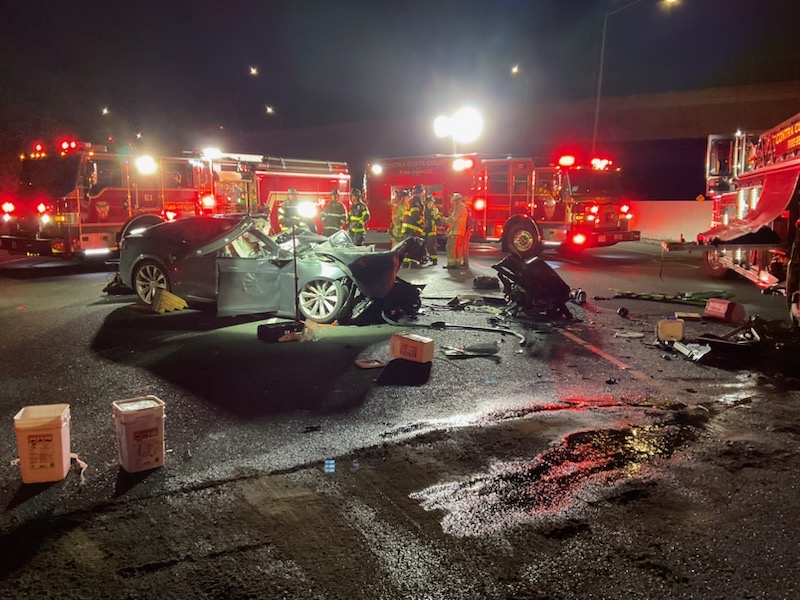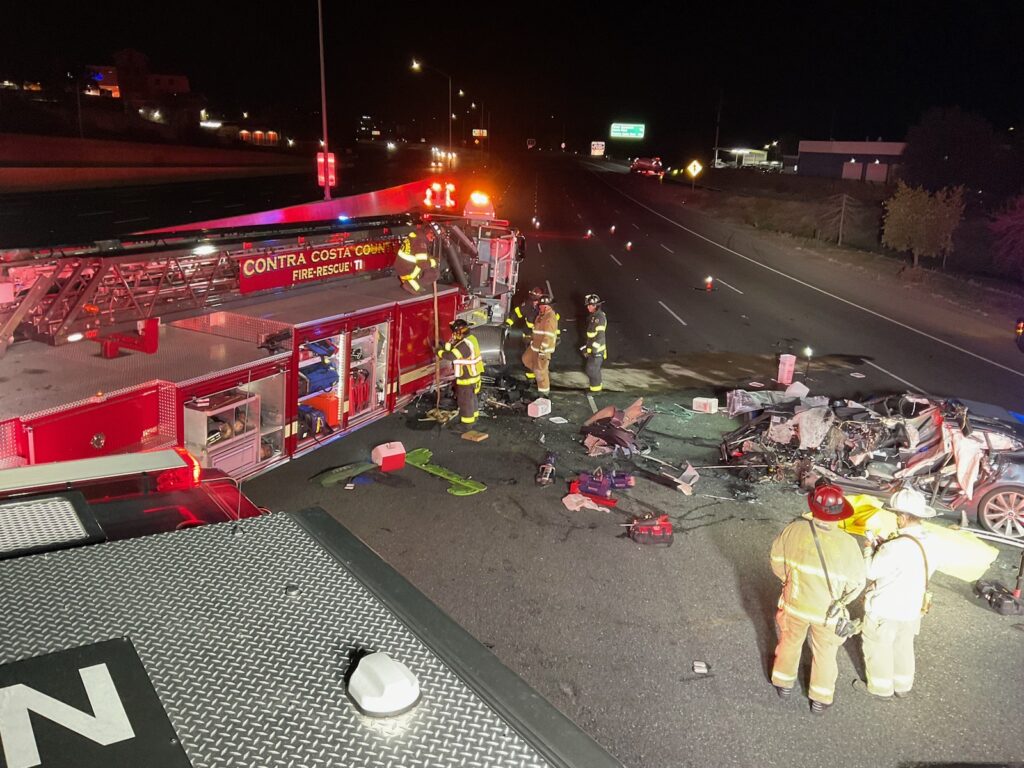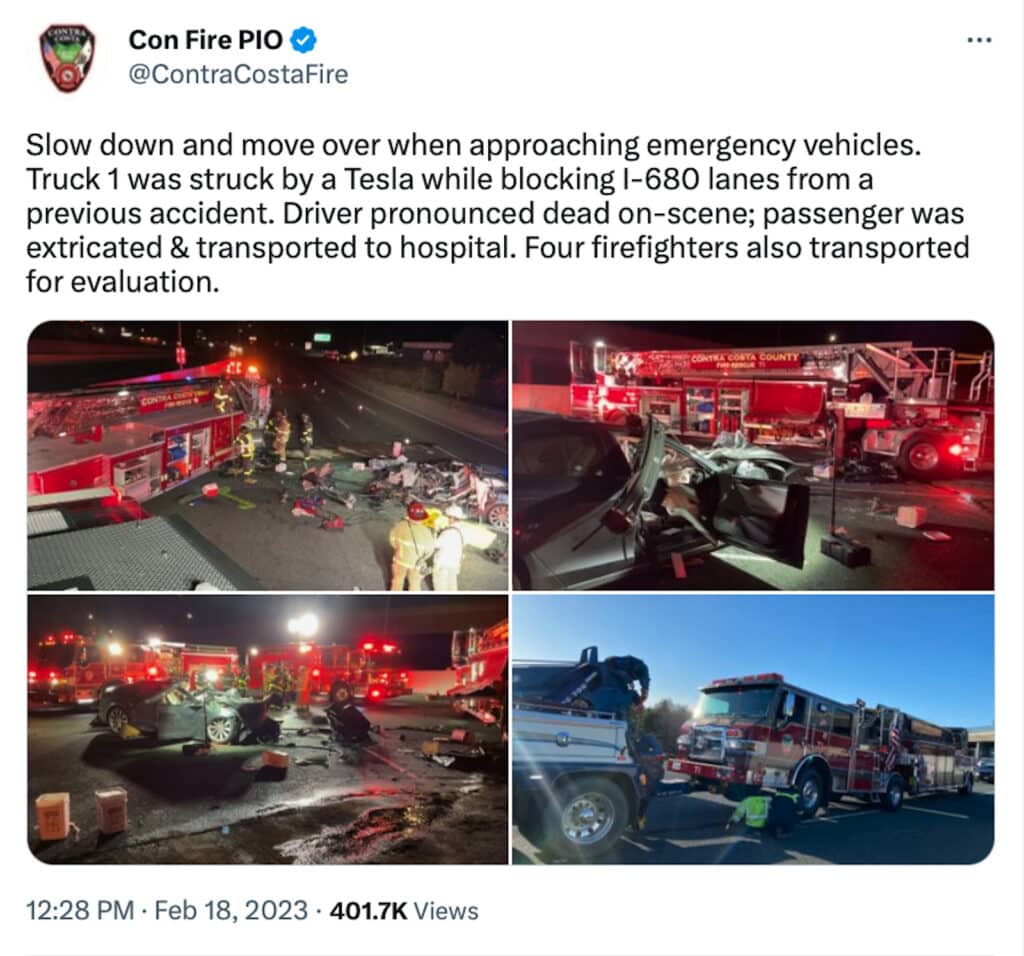Another Tesla Driver Killed in Collision with Fire Truck
Another Tesla driver died over the weekend, this time in California. The collision occurred when a Tesla rammed a fire truck parked across two freeway lanes to protect first responders who were preparing to tow a disabled vehicle at about 4 a.m. Saturday.

Authorities do not yet know if the driver had Autopilot or Full Self Driving (FSD) engaged. A passenger in the Tesla was also injured in the collision.
The incident is certain to raise additional concerns about Tesla’s advanced driver assistance systems, which are already the subject of intense scrutiny at the National Highway Traffic Safety Administration (NHTSA).
According to the Los Angeles Times, Tesla reported 516 collisions involving its ADAS systems over the period from July 1, 2021 to Nov. 30, 2022. In the same period, Ford reported seven such collisions, and GM reported just two for its products.
When equalized for the number of ADAS-equipped cars on the road, Tesla’s numbers are still high. If Teslas crashed at the same rate as similarly equipped GM and Ford vehicles, there would have been 70 collisions.
Active FSD recall

This collision comes in the wake of a controversial recall of almost 363,000 Tesla vehicles equipped with the company’s Full Self-Driving beta software. The company agreed to an over-the-air update under pressure from NHTSA, and CEO Elon Musk insists this is not the same thing as a recall, even though the end result is the same.
However, the specific problems addressed in the recall would not have prevented this weekend’s fatality. The recall addresses issues with FSD concerning yellow light timing, negotiating stop signs, variable speed zones, and lane changes. According to Tesla, there have been no reports of any crashes, injuries or deaths in any of those scenarios related to the recall, and the problems are simply traffic code violations.
SEC investigation
Claims made by Tesla and CEO Musk about self-driving capabilities have also resulted in an investigation by the Securities and Exchange Commission (SEC) on how the company’s marketing practices may have affected its stock price. A class-action lawsuit is pending, as well as an investigation by the California DMV.

At the heart of the issue is whether Tesla has intentionally misled consumers to believe Autopilot and FSD are true, hands-free systems. Critics have pointed to an early video released by the automaker implying such capabilities, as well as e-mails from Musk ordering edits to the video. Testimony by the current head of the Autopilot development team in an ongoing lawsuit has also raised questions about Tesla’s marketing strategy.
Drivers are still buying
Even in the face of these troubles, buyers are still hot to purchase Tesla products. The top two vehicles purchased in California in 2022 were Teslas, with the Model Y claiming the top spot, followed by the Model 3. The Model Y accounted for 87,257 registrations or 7.6% market share for light trucks, while the Model 3 was the top-selling passenger car model in the state, with 78,934 registrations. Both vehicles sold over 20,000 units more than the second-place vehicles, the Toyota RAV4 and Toyota Camry respectively.
At some point, with the number of fatal crashes likely involving Tesla’s ADAS systems continuing to rise, the focus of renewed safety efforts may shift to educating Tesla drivers.
Tesla owners have the ability to disengage Autopilot and FSD and drive the cars themselves, which would seem like the smart choice if Tesla vehicles continue to ram into stationary objects at freeway speeds.
Auto Lovers Land
Comments
Post a Comment